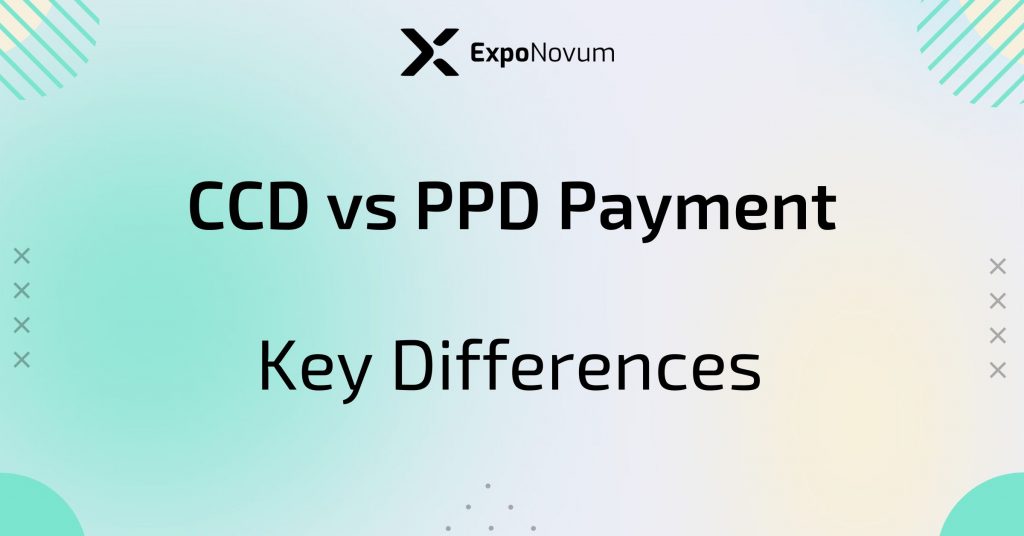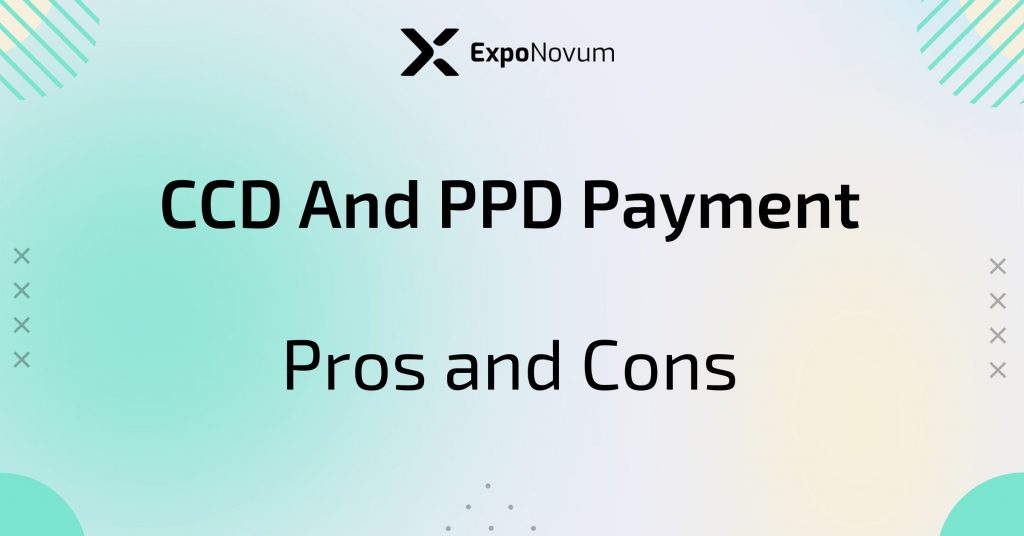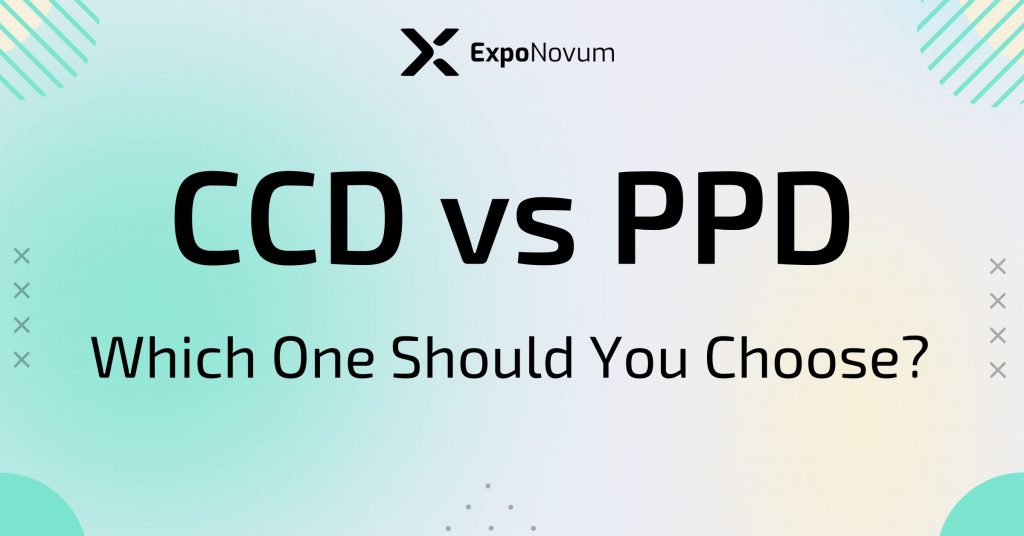Introduction
In online transactions, businesses constantly search for secure and efficient payment methods. Two popular options that have gained significant attention are CCD (Cardholder Cardholder Data) and PPD (Preauthorized Payment and Deposit). While both provide electronic payment solutions, they have distinct features and functionalities. In this article, we will delve into the details of CCD and PPD, explore their differences, and help you decide which option suits your business needs best.
Understanding CCD
CCD, or Cardholder Cardholder Data, is a payment system that facilitates electronic fund transfers between businesses, customers, and financial institutions. It is primarily used for Business-to-Business (B2B) transactions and allows companies to electronically transfer funds from their bank account to another party’s account. CCD transactions typically involve exchanging sensitive information, such as bank account numbers and payment details, making security a crucial aspect of this payment method.
Understanding PPD
PPD, or Preauthorized Payment and Deposit, is a payment system designed for consumer transactions. It enables individuals to authorize recurring payments, such as monthly subscriptions or utility bills, to be automatically debited from their bank account. PPD offers convenience to consumers by eliminating the need for manual payments while providing businesses with a predictable and reliable payment model.

#1 CCD vs PPD: Key Differences
While CCD and PPD are electronic payment methods, they differ in several key aspects. Understanding these differences is essential in selecting the right payment system for your business. Let’s examine some of the contrasting features between CCD and PPD:
- Target Audience: CCD primarily targets businesses engaging in B2B transactions, whereas PPD is aimed at individual consumers for B2C transactions.
- Transaction Type: CCD transactions are often one-time or batch payments, while PPD transactions involve recurring, preauthorized payments.
- Data Security: CCD transactions involve sensitive cardholder data, so they require higher security measures than PPD transactions. PPD transactions focus more on the authentication and Authorization of recurring payments.
- Payment Authorization: CCD payments are typically authorized by the payer, while PPD payments require preauthorization from the payee for recurring payments.
- Transaction Codes: CCD payments use standardized transaction codes, such as “PPD+,” “CCD+,” or “CTX+,” to provide detailed information about the transaction type. PPD payments, on the other hand, use a code beginning with “PPD” to indicate preauthorized debits.
#2 CCD vs PPD: Comparison of Features
When choosing between CCD and PPD, it’s crucial to consider the specific features each payment method offers. Let’s compare the features of
- Data Protection: CCD provides advanced security measures to protect cardholder data, reducing the risk of data breaches. PPD focuses on secure and reliable recurring payment processing.
- Flexibility: CCD allows businesses to initiate one-time or batch payments per their requirements. PPD provides flexibility by allowing individuals to set up automatic recurring payments for regular expenses.
- Transaction Reporting: CCD transactions include detailed information in the payment codes, providing valuable data for reconciliation and reporting. PPD transactions offer information related to preauthorized debits, aiding financial planning and tracking expenses.
- Payment Automation: CCD requires manual initiation of payments, whereas PPD automates recurring payments, eliminating the need for regular manual intervention.
- Integration and APIs: CCD systems often provide robust integration capabilities and APIs for seamless integration with existing business systems. PPD solutions may also offer integration options but with a primary focus on consumer convenience.

#3 Pros and Cons of CCD And PPD
Pros of CCD
- Enhanced security measures for protecting cardholder data.
- Suitable for one-time payments or batches of payments.
- Detailed transaction codes for improved reconciliation.
- Seamless integration with existing business systems.
Cons of CCD
- May require additional security measures and compliance with regulations.
- Limited to B2B transactions, not ideal for consumer-focused businesses.
- Manual initiation of payments can be time-consuming for large volumes.
Pros of PPD
- Convenient and automated recurring payment processing.
- Ideal for businesses with recurring billing models.
- Simplifies financial planning with predictable payment schedules.
- Reduces manual intervention and improves efficiency.
Cons of PPD
- Limited to consumer transactions, not suitable for B2B payments.
- May require additional efforts to obtain preauthorization from customers.
- Potential issues with failed payments or insufficient funds.
#4 Use Cases Of CCD And PPD
Use Cases of CCD
CCD payment system finds its applications in various scenarios. Here are some simple use cases:
- Business-to-Business Payments: CCD facilitates secure and efficient fund transfers between businesses, ensuring timely payments for goods and services.
- Payroll Processing: CCD enables companies to automate payroll processes, ensuring hassle-free salary transfers to their employees’ bank accounts.
- Supplier Payments: Businesses can use CCD to streamline supplier payments, maintaining solid relationships and efficient supply chains.
Use Cases of PPD
PPD payment system offers convenience for individuals and businesses. Some notable use cases include:
- Subscription Services: PPD allows customers to set up recurring payments for subscription-based services, such as streaming platforms or software subscriptions.
- Utility Bill Payments: PPD enables individuals to authorize automatic payments for utility bills, ensuring timely payments without manual intervention.
- Membership Fees: PPD simplifies the collection of membership fees for clubs, gyms, or professional organizations.
#5 Pricing Comparison
The pricing structures for CCD and PPD can vary depending on the payment service provider and the specific requirements of your business. It’s essential to consider the following factors when comparing pricing:
- Transaction Fees: Evaluate the transaction fees associated with each payment method. Depending on the provider, CCD may have a different fee structure than PPD.
- Volume Discounts: Check if the payment service provider offers volume discounts for high transaction volumes.
- Additional Costs: Consider any additional costs, such as setup fees or monthly subscription charges.
- Contract Terms: Review the contract terms and the commitment length the payment service provider requires.
While pricing is important, it should not be the sole determining factor in your decision-making process. Assess each payment method’s overall value and benefits to ensure the right fit for your business.

Which One Should You Choose?
The decision between CCD and PPD depends on your specific
Business requirements and the nature of your transactions. Consider the following factors when making a choice:
- Transaction Type: Determine whether your business requires one-time or recurring payments.
- Data Sensitivity: Assess the sensitivity of the data involved in your transactions and ensure that the chosen payment method offers adequate security measures.
- Target Audience: Consider whether your customers are businesses or individual consumers.
- Integration Needs: Evaluate the integration capabilities of each payment method and how well they align with your existing systems.
- Business Scalability: Anticipate your business’s future growth and scalability and choose a payment method that can accommodate your evolving needs.
It’s also advisable to consult with your payment service provider or seek professional advice to make an informed decision that aligns with your business objectives.
Conclusion
CCD and PPD offer distinct advantages for businesses and consumers in electronic payment systems. CCD focuses on secure B2B transactions, while PPD simplifies recurring consumer payments.
By understanding their differences, features, and use cases, you can make an informed decision that suits your business requirements.
Consider transaction types, data sensitivity, and integration needs to select the most suitable payment method. Remember to evaluate your business’s pricing, long-term benefits, and scalability.
FAQs
FAQ 1: What is CCD?
CCD stands for Cardholder Cardholder Data and is an electronic payment system primarily used for Business-to-Business (B2B) transactions. It facilitates secure fund transfers between businesses, customers, and financial institutions.
FAQ 2: What is PPD?
PPD stands for Preauthorized Payment and Deposit, an electronic payment system designed for consumer transactions. It allows individuals to authorize recurring payments automatically debited from their bank accounts.
FAQ 3: Which payment model is better for my business?
The choice between CCD and PPD depends on your business requirements. CCD may be more suitable if you primarily engage in B2B transactions or require one-time payments. On the other hand, if you need a system for recurring payments from individual consumers, PPD would be a better choice.
FAQ 4: Are CCD and PPD suitable for all industries?
CCD and PPD can be used across various industries, but their suitability depends on transaction types and target audiences. CCD is commonly used in B2B industries, while PPD suits businesses focused on consumer transactions.
FAQ 5: Can I switch from CCD to PPD or vice versa?
Switching between CCD and PPD may be possible, but it depends on the systems and infrastructure in place. It’s recommended to consult with your payment service provider and assess the compatibility of the new payment method with your existing systems.